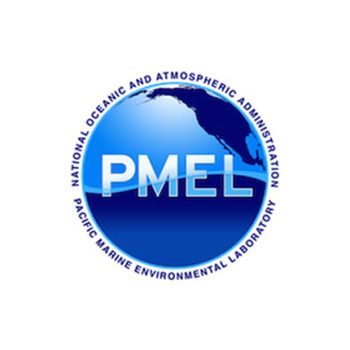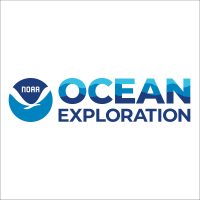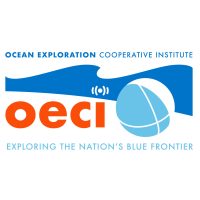Expedition dates: March 3 – April 11, 2023
On its inaugural expedition, Falkor (too) will head to the Mid-Atlantic Ridge with Chief Scientist Dr. David Butterfield from the NOAA Pacific Marine Environmental Laboratory – University of Washington, and his team to search for hydrothermal lost cities. In 2000, scientists found a hydrothermal vent system on the Atlantis Massif unlike any seen before. Ghostly towers made of limestone sprang from the seafloor, spewing clear liquid, and very few creatures dwelled among the vents. When the scientists sampled the chemistry, they found it vastly different from black smoker vents on the nearby Mid-Atlantic Ridge volcanoes. The scientists named the new, alkaline vent system, “Lost City.” They determined the reaction creating this new type of vent occurs on a geologic formation known as an oceanic core complex, where mantle rock is exposed to cold seawater. These carbonate vents form when the seawater and mantle rock react in a process known as serpentinization.
Since 2000, scientists have discovered only a few other vents like Lost City, and none that rival the size of the original. During this expedition, Butterfield and his team will search for more vent fields like Lost City— alkaline vents created by serpentinization. Finding them is imperative to science, as their chemical makeup is suspected to be closest to the conditions that facilitated life’s origin on our planet. The microbes living in these depths may provide insight into the circumstances that facilitated the beginning of life on Earth—and possibly other planets.
Lost and Found: Finding Life’s Origins in Lost City Vents
While the exact origins of life on Earth are unknown, the process necessitates two things: organic molecules and a stable environment to preserve them. The chemical process that creates Lost City-style vents meets both requirements. It takes place in oceanic core complexes—areas of the seafloor where mantle rock meets the ocean through cracks and fissures in the earth’s crust. When mantle minerals are exposed to seawater, they undergo a chemical reaction known as “serpentinization”. This process creates the rock serpentinite, prized in jewelry and sculpture for its lustrous green color and scale-like patterning, along with other minerals and molecules. It also produces abundant hydrogen and methane, the simplest hydrocarbon, and highly alkaline waters that transform carbon dioxide in seawater to solid carbonate minerals.
The chemical environment of alkaline vents is favorable to forming and preserving the organic chemical building blocks of life. Microbes, the first life on Earth, may have originated in conditions like those found in Lost City-style vents. Studying the microbes that utilize the hydrogen and methane at these vents may reveal clues about the origin of life on our planet. It may also provide insight into where to look for life on other ocean worlds in our solar system.
Seeking Another Lost City
Warm, alkaline vents like Lost City are harder to find than hot, ‘black smoker’ type vents because they don’t produce intense particle plumes that can be detected with optical sensors. However, they do produce plumes of hydrogen and methane. On this expedition, after mapping an oceanic core complex using Falkor (too)’s multibeam sonar, the team will use the ship’s CTD to find plumes and collect deep water samples to analyze on board. Two AUVs from MBARI outfitted with oxygen reduction potential sensors and magnetometers will produce super-high resolution seafloor maps and plume signals that point to source areas. Finally, the ROV SuBastian will use cameras to hunt for bright, white carbonate features on the dark rocky seafloor. The team will also utilize a newly developed in-situ methane laser absorption spectrometer integrated onto ROV SuBastian to help home in on venting sources and map how much methane is in the surrounding waters. Using these strategies, the team seeks to discover if this type of vent is truly rare or commonly found at oceanic core complexes.
The First Expedition
The expedition will be the first to test the capabilities of R/V Falkor (too). Ten new labs will finally have scientists to fill them and the gondola will be fired up to create its first seafloor maps. ROV SuBastian dives will once again be livestreamed to the public, allowing everyone onshore to engage with the science as it happens in real time. Joining the expedition will be SOI’s first Berth of Opportunity participant, Marc Fontanez Ortiz of Arizona State University, who will be working with the microbiology team and providing Spanish narration during ROV dives. The luck dragon finally returns as it aids scientists in their search for lost cities.
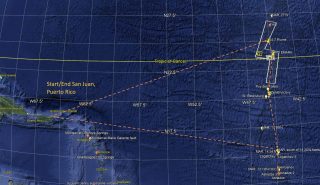
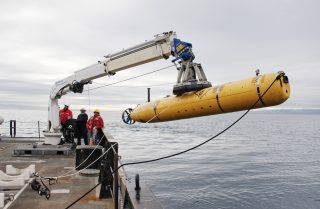

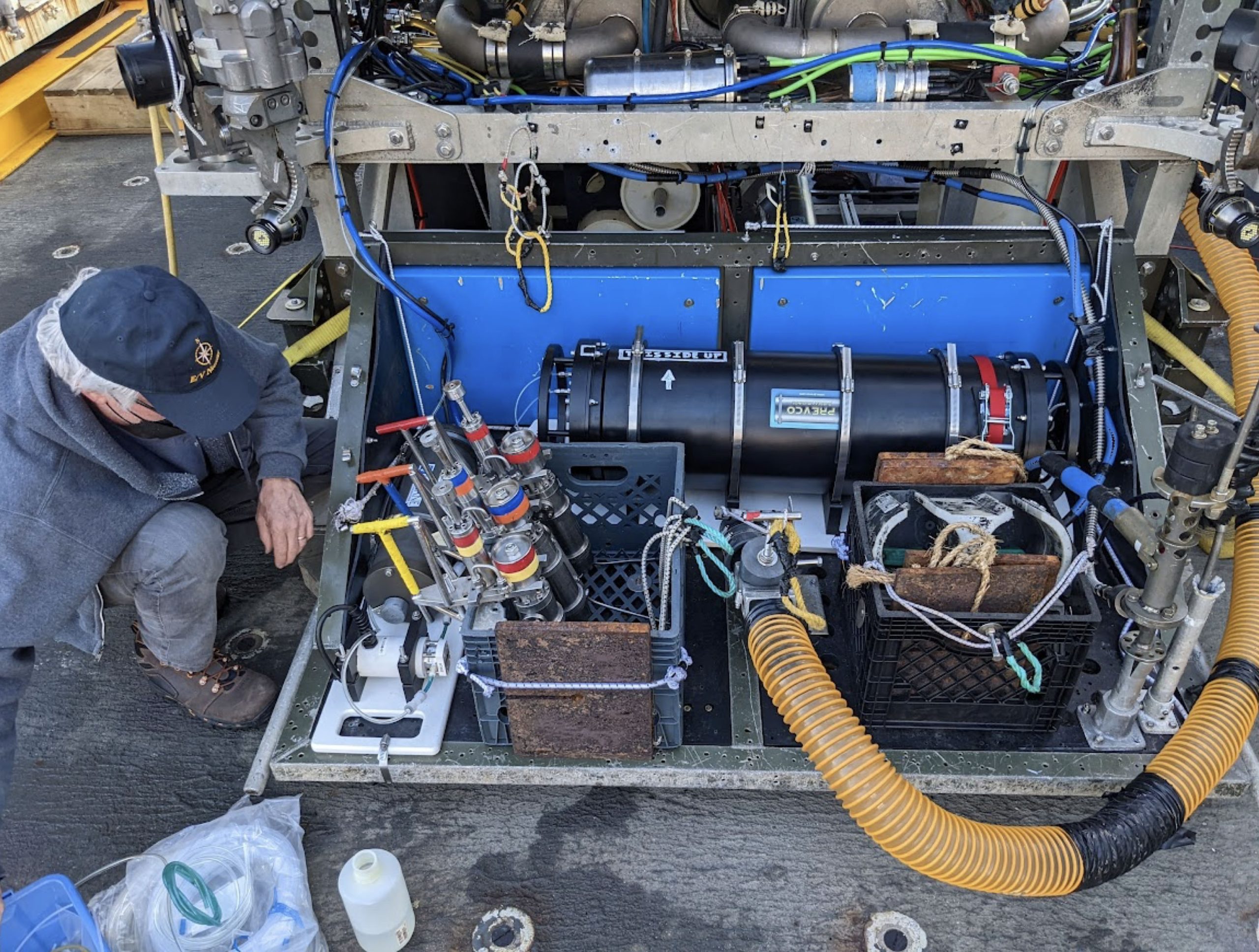
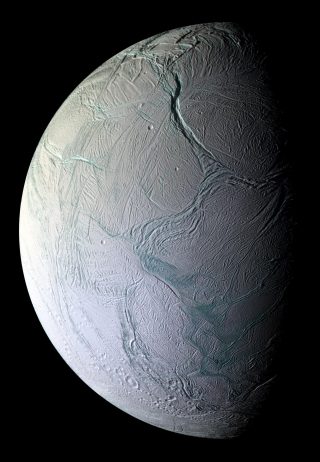
Data & Publications
The list of rock samples, metadata, and their International Geosample Numbers (IGSN) can be accessed here.
Metadata from the gas-tight samples can be accessed here.
Environmental sensor data, collected by the sensors embedded in R/V Falkor (too) is archived at Rolling Deck to Repository.
ADCP data, curated by University of Hawaii can be accessed here.
LIVE ROV FOOTAGE
In the News
Seafloor life abounds around hydrothermal vents hot enough to melt lead
South Africa Today • May 9, 2023
Seafloor life abounds around hydrothermal vents hot enough to melt lead
Mongabay • May 5, 2023
Seafloor life abounds around hydrothermal vents hot enough to melt lead
MSN • May 5, 2023
Pop Culture-Savvy Scientists Cheer Discovery of New Undersea Vents
Explorersweb • May 3, 2023
Hydrothermal Vent Fields Discovered in Mid-Atlantic Ridge
Sea Technology • May 3, 2023
Hoots and high fives’ as scientists find spectacular undersea vents
News Leportale • May 1, 2023
Hoots and high fives’ as scientists find spectacular undersea vents
My Style News • May 1, 2023
Scientists make deep sea discovery
WAtoday • May 1, 2023
Scientists make deep sea discovery
The Age • May 1, 2023
Scientists make deep sea discovery
world newz 4u • May 1, 2023
Scientists make deep sea discovery
Brisbane Times • May 1, 2023
Scientists make deep sea discovery
The Sydney Morning Herald • May 1, 2023
Scientists Discover Three New Hydrothermal Vent Fields on Mid-Atlantic Ridge
SevenSeas Media • April 30, 2023
Scientists discover ‘spectacular’ undersea hydrothermal vents
MSN • April 30, 2023
Scientists discover ‘spectacular’ undersea hydrothermal vents
SFGATE • April 30, 2023
Scientific Expedition Reveals Thriving Ecosystems At New Hydrothermal Vent Fields – Pakistan Live News
Pakistan Live News • April 30, 2023
Scientists discover ‘spectacular’ undersea hydrothermal vents
The Record Patriot • April 30, 2023
Scientific expedition reveals thriving ecosystems at new hydrothermal vent fields
The International News • April 30, 2023
Scientists discover ‘spectacular’ undersea hydrothermal vents
The Washington Post • April 30, 2023
A Newly Discovered ‘Lost City’ Harbors a Plethora of Underwater Life
Cultura Colectiva • April 25, 2023
Learning more about the ecosystems along the active vents at the Mid-Atlantic Ridge at 2000 m water depth
Stone Ideas • April 26, 2023
Scientists Discover Three New Hydrothermal Vent Fields on Mid-Atlantic Ridge
Ocean News and Technology • April 26, 2023
New hydrothermal vents discovered on mid-Atlantic ridge
News7g • April 27, 2023
Schmidt Ocean Institute expedition discovers new hydrothermal vent fields
Hydro International • April 25, 2023
Scientists discover three new hydrothermal vent fields on the Mid-Atlantic Ridge
My Droll • April 24, 2023
Scientists discover three new hydrothermal vent fields on the Mid-Atlantic Ridge
Scienmag • April 24, 2023
Scientists discover three new hydrothermal vent fields on the Mid-Atlantic Ridge
Bioengineer.org • April 24, 2023
Scientists discover three new hydrothermal vent fields on the Mid-Atlantic Ridge
Phys.org • April 24, 2023
See Newly Discovered Deep Sea ‘Chimneys’ Teeming With Life
Gizmodo Australia • April 24, 2023
Unveiling New Hydrothermal Vent Fields on the Mid-Atlantic Ridge: A Scientific Breakthrough
Curiosmos • April 24, 2023
Scientists discover three new hydrothermal vent fields on the Mid-Atlantic Ridge
Coastal News Today • April 24, 2023
Scientists discover three new hydrothermal vent fields on the Mid-Atlantic Ridge
Samachar Central • April 24, 2023
New Hydrothermal Vent Fields Discovered on Mid-Atlantic Ridge
Today’s Chronic • April 23, 2023
See Newly Discovered Deep Sea ‘Chimneys’ Teeming With Life
a2z Daily News • April 23, 2023
New Hydrothermal Vent Fields Discovered on Mid-Atlantic Ridge
World Time Todays • April 23, 2023
New Hydrothermal Vent Fields Discovered on Mid-Atlantic Ridge
Dive Photo Guide • April 23, 2023
New Hydrothermal Vent Fields Discovered on Mid-Atlantic Ridge
Swifttelecast • April 23, 2023
New Hydrothermal Vent Fields Discovered on Mid-Atlantic Ridge
NewsBeezer • April 23, 2023
Newly discovered hydrothermal vents are surrounded by deep sea life
Vaaju • April 23, 2023
Scientists find three new hydrothermal vent fields on Mid-Atlantic Ridge
Knowridge • April 22, 2023
See Newly Discovered Deep Sea ‘Chimneys’ Teeming With Life
Gizmodo • April 22, 2023
See Newly Discovered Deep Sea ‘Chimneys’ Teeming With Life
New York Folk • April 22, 2023
‘Lost cities.’ New hydrothermal vent towers found billowing in Mid-Atlantic, team says
The Rock Hill Herald • April 22, 2023
Scientists discover three new hydrothermal vent fields on Mid-Atlantic Ridge
EurekAlert! • April 21, 2023
Away Team Report: New Hydrothermal Vent Fields Discovered On Earth’s Mid-Atlantic Ridge
Astrobiology • April 21, 2023
Newly Discovered Hydrothermal Vents are Surrounded by Deep-Sea Life
PetaPixel • April 21, 2023
‘Lost cities.’ New hydrothermal vent towers found billowing in Mid-Atlantic, team says
The San Luis Obispo Tribune • April 21, 2023
‘Lost cities.’ New hydrothermal vent towers found billowing in Mid-Atlantic, team says
The Raleigh News & Observor • April 21, 2023
‘Lost cities.’ New hydrothermal vent towers found billowing in Mid-Atlantic, team says
The Miami Herald • April 21, 2023
‘Lost cities.’ New hydrothermal vent towers found billowing in Mid-Atlantic, team says
The Island Packet • April 21, 2023
‘Lost cities.’ New hydrothermal vent towers found billowing in Mid-Atlantic, team says
Fort Worth Star-Telegram • April 21, 2023
‘Lost cities.’ New hydrothermal vent towers found billowing in Mid-Atlantic, team says
The Bellingham Herald • April 21, 2023
‘Lost cities.’ New hydrothermal vent towers found billowing in Mid-Atlantic, team says
The Bellingham Herald • April 21, 2023
‘Lost cities.’ New hydrothermal vent towers found billowing in Mid-Atlantic, team says
Merced Sun-Star • April 21, 2023
‘Lost cities.’ New hydrothermal vent towers found billowing in Mid-Atlantic, team says
Lexington Herald-Leader • April 21, 2023
‘Lost cities.’ New hydrothermal vent towers found billowing in Mid-Atlantic, team says
The Fresno Bee • April 21, 2023
‘Lost cities.’ New hydrothermal vent towers found billowing in Mid-Atlantic, team says
The Charlotte Observer • April 21, 2023
‘Lost cities.’ New hydrothermal vent towers found billowing in Mid-Atlantic, team says
Idaho Statesman • April 21, 2023
‘Lost cities.’ New hydrothermal vent towers found billowing in Mid-Atlantic, team says
The Herald-Sun • April 21, 2023
‘Lost cities.’ New hydrothermal vent towers found billowing in Mid-Atlantic, team says
Yahoo News Canada • April 21, 2023
‘Lost cities.’ New hydrothermal vent towers found billowing in Mid-Atlantic, team says
The Modesto Bee • April 21, 2023
‘Lost cities.’ New hydrothermal vent towers found billowing in Mid-Atlantic, team says
The Sun News • April 21, 2023
‘Lost cities.’ New hydrothermal vent towers found billowing in Mid-Atlantic, team says
Bradenton Herald • April 21, 2023
‘Lost cities.’ New hydrothermal vent towers found billowing in Mid-Atlantic, team says
Tri-City Herald • April 21, 2023
‘Lost cities.’ New hydrothermal vent towers found billowing in Mid-Atlantic, team says
Ledger-Enquirer • April 21, 2023
‘Lost cities.’ New hydrothermal vent towers found billowing in Mid-Atlantic, team says
Macon Telegraph • April 21, 2023
‘Lost cities.’ New hydrothermal vent towers found billowing in Mid-Atlantic, team says
The Wichita Eagle • April 21, 2023
‘Lost cities.’ New hydrothermal vent towers found billowing in Mid-Atlantic, team says
Sun Herald • April 21, 2023
‘Lost cities.’ New hydrothermal vent towers found billowing in Mid-Atlantic, team says
Belleville News-Democrat • April 21, 2023
‘Lost cities.’ New hydrothermal vent towers found billowing in Mid-Atlantic, team says
The Olympian • April 21, 2023
‘Lost cities.’ New hydrothermal vent towers found billowing in Mid-Atlantic, team says
The News Tribune • April 21, 2023
‘Lost cities.’ New hydrothermal vent towers found billowing in Mid-Atlantic, team says
The Sacramento Bee • April 21, 2023
‘Lost cities.’ New hydrothermal vent towers found billowing in Mid-Atlantic, team says
The Kansas City Star • April 21, 2023
‘Lost cities.’ New hydrothermal vent towers found billowing in Mid-Atlantic, team says
Yahoo News • April 21, 2023
‘Lost cities.’ New hydrothermal vent towers found billowing in Mid-Atlantic, team says
Centre Daily Times • April 21, 2023
Three new hydrothermal vent fields found in Atlantic Ocean
NewsDeal • April 21, 2023
“Lost Cities.” New hydrothermal vent towers found in mid-Atlantic, team says
Canada Today • April 21, 2023
See Newly Discovered Deep Sea ‘Chimneys’ Teeming With Life
Yahoo News • April 21, 2023
See Newly Discovered Deep Sea ‘Chimneys’ Teeming With Life
Technoblender • April 21, 2023
See Newly Discovered Deep Sea ‘Chimneys’ Teeming With Life
PostX Digital • April 21, 2023
See Newly Discovered Deep Sea ‘Chimneys’ Teeming With Life
All Fun Jobs • April 21, 2023
See Newly Discovered Deep Sea ‘Chimneys’ Teeming With Life
The Nation.lk • April 21, 2023
Newly Discovered Hydrothermal Vents are Surrounded by Deep-Sea Life
Swifttelecast • April 21, 2023
Scientists Discover Three New Hydrothermal Vent Fields on Mid-Atlantic Ridge
Cooperative Institute for Climate, Ocean, & Ecosystem Studies • April 21, 2023
Scientists explore oceans in search of solutions to climate change
MSN • April 20, 2023
Scientists explore oceans in search of solutions to climate change
The Today Show • April 20, 2023
Scientists explore oceans in search of solutions to climate change
NBC • April 20, 2023
Scientists explore oceans in search of solutions to climate change
Yahoo! News • April 20, 2023
Scientists Discover Three New Hydrothermal Vent Fields on Mid-Atlantic Ridge
ECO (Environment Coastal Offshore) Magazine • April 20, 2023
Hydrothermal Activity Discovered Along the Puy de Folles Vent Field
Cooperative Institute for Climate, Ocean, & Ecosystem Studies • April 19, 2023
Hydrothermal activity detected along the Puy de Folles Vent Field
NewsBeezer • April 18, 2023
Hydrothermal Activity Discovered Along The Puy de Folles Vent Field
Astrobiology Web • April 18, 2023
Massive Bigfin Squid Spotted In Extremely Rare Deep-Sea Sighting
IFLScience • April 7, 2023
From The Schmidt Ocean Institute: “Biology of Deep-Sea Hydrothermal Vents”
Science Springs • April 1, 2023
Three new hydrothermal springs found at a depth of 4000 m overflowing with party Shrimp
24 News Breaker • March 30, 2023
Three New Hydrothermal Vents Found, And They’re Shrimply Stunning
IFLScience • March 29, 2023
From The Schmidt Ocean Institute: “Origins and Life Going deep to study Earth’s tiniest organisms”
Science Springs • March 25, 2023
